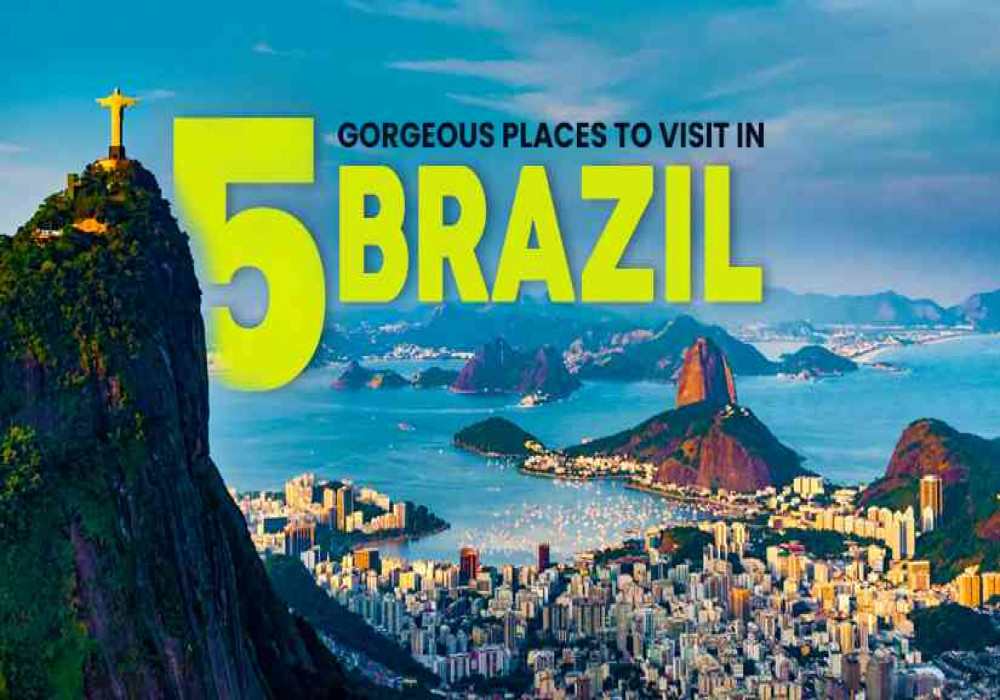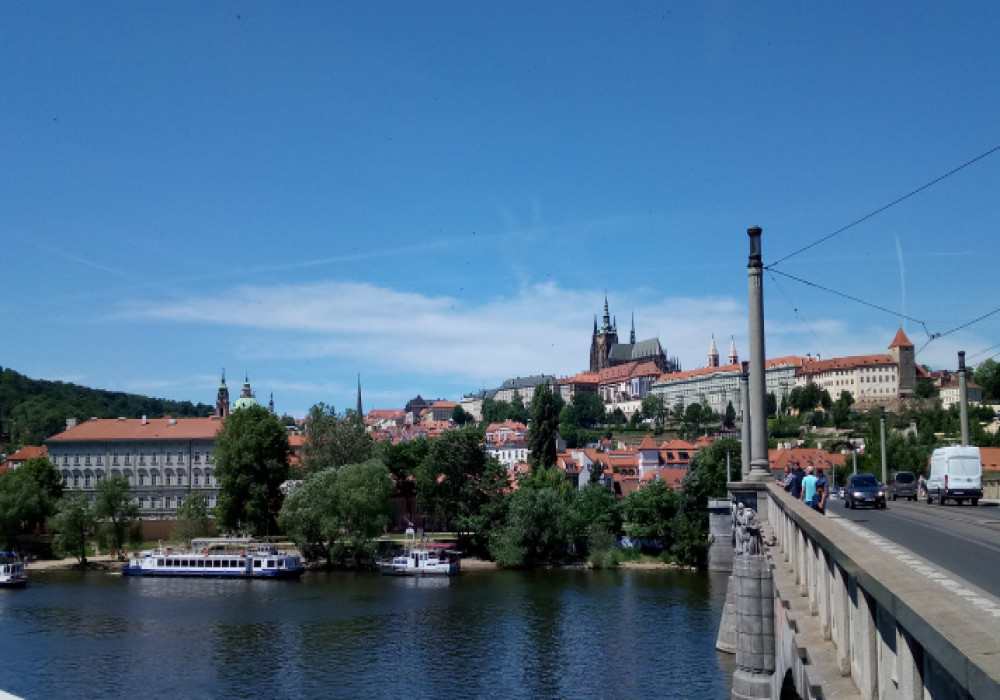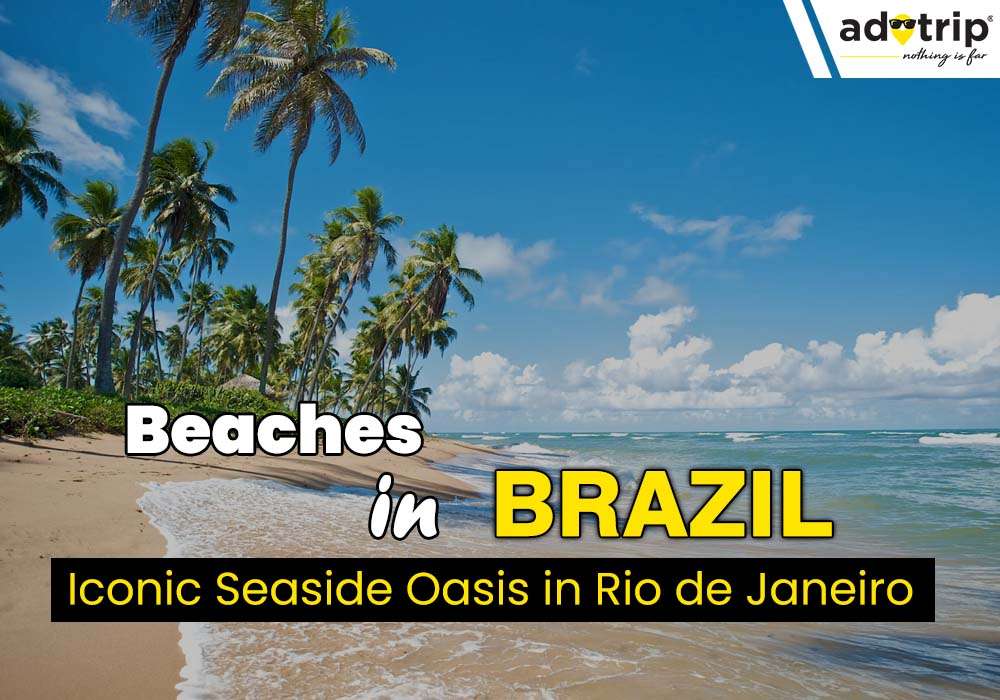
Last Updated At: 10-Feb-2025
Places to Visit in Brazil 2025 - Explore Top Destinations in the Land of Wonders
Occupying almost half of South America, Brazil is the largest country on the continent. Almost all of it lies in the Southern hemisphere, and most of it is tropical, with long stretches of forests filled with exotic wildlife and vegetation. The 7,400 kilometers long coast of Brazil along the Atlantic Ocean is lined with golden-sand beaches, and its interior is blessed with mineral riches. The gold that came out from Brazil's mines still adorns the churches of Portugal, the colonial power that used to rule over the country until 1822. Brazil’s architecture, decorative arts like glazed tiles in its churches and convents, and the language are heavily influenced by Portuguese culture. Brazil is both an exciting cultural destination and a tropical paradise for tourists with attractions for all tastes, from jungle exploration and idyllic beach vacation and to pulsing rhythms of Rio’s Carnival and the world-class art museums.
5 Best Places to Visit in Brazil
To know about the famous Brazil tourist places, use this list of the top tourist attractions in the country.
- Iguazu Falls
- Ipanema
- Amazon
- Ouro Preto
- Rio De Janeiro
1. Iguazu Falls
The Iguazu river drops spectacularly at the point where Brazil, Argentina, and Paraguay meet. The water from 247 waterfalls thunders down into the gorge below in the shape of a semicircle. The river is constricted to one-fourth of the waterfall's width, making water gush down the falls even stronger.
A few of the falls are more than 100 meters high and cover so much area that you won’t be able to see all of them at once, but one gets the widest view from the Brazilian side. A tower and catwalks offer a different view, and a bridge reaches all the way to the largest waterfall, Garganta does Diabo or the Devil’s Throat.
One can cross over and go to the Argentinian side to have a closer look at the falls. The catwalks extend farther into the center of the waterfalls. Most tourists see the falls from both sides as they both offer a different view and perspective.
Iguazu Falls are surrounded and protected by the UNESCO-acclaimed National Park, where rainforests are home to more than 1,000 species of fauna and avian species, including otters, capybaras, ocelots, and deer.
2. Ipanema
The glorious white sands of the beaches of Copacabana merge into the just as popular beaches of Ipanema. The wave design of Copacabana’s wide promenade can be witnessed here as well, separating the sand from the line of chic cafes, cinemas, hotels, restaurants, and art galleries that make this a place a hot spot for tourists all year round.
Beyond the Jardim de Ala Canal, which drains Lagoa Rodrigo de Freitas lagoon, lies the beaches of Leblon. With few tourists and more locals, these beaches are popular amongst families. With an antique market the Feira de Artesanato de Ipanema and Praça de Quental, the Sundays here remain very busy with street food, art, handmade crafts, and music.
Be careful while deciding on where to go swimming as the waves at Leblon and Ipanema can be very unpredictable and strong. Ask the locals and maintain your distance from the places where you don’t see others swimming. If you are a surfing kind of person, then head to the stretch between Ipanema and Copacabana, where all the surfers hang out.
Also Read: A Comprehensive Guide On How To Book Cheap Flight Tickets
3. Amazon
Some 20 kilometers away from Manaus, the Rio Negro waters merge with the light muddy water of the Rio Solimoes, flowing side by side for 6 kilometers before merging with Amazon. One can reach this point via boats from Manaus, which is known as Encontro das Aguas or meeting of the waters.
Other boat trips are also available that will take you into the heart of the rainforest and the network of channels, rivers, and lakes made by the three rivers. The Anavilhanas Islands in Rio Negro form an archipelago with streams, lakes, and flooded forests that provide a full cross-section of the ecosystem of Amazon.
One can see sloths, toucans, turtles, monkeys, parrots, caimans, and other wild species on a boat trip here. Close to Manaus, the 688-hectare wide Janauari Ecological Park has several different ecosystems that one can explore on a boat ride.
The major of this place is a lake which is covered with water-lilies found only in the jungles of Amazon. Make sure to see Manaus’ famous Italian Renaissance-style opera house, designed to put Manaus on the map and to make it South America’s center of culture.
4. Ouro Preto
Ouro Preto is Brazil’s old capital which offers a peek into the wealth of Brazil’s state of Minas Gerais in its full glory during the colonial era through the interiors of its churches. The walls of these churches are washed in gold that flowed with diamonds mined from the surroundings in the 17th and 18th centuries.
Surrounded by mountains and cascading down the sides of a steep valley, Ouro Preto is a prized possession of Brazil, but its mountain setting and steep narrow street - however captivating for visitors today - didn’t fill the needs of a growing capital. Leaving Ouro Preto in its time capsule, the government of Brazil moved to the newly built capital of Belo Horizonte.
The 17th century Rococo and Baroque churches of Matriz de Nossa Senhora do Pilar and Sao Francisco de Assis are the best examples, but the town is so rich with colonial architecture that this city has been named one of the UNESCO World Heritage Sites. The steep streets, so important in some places that they become staircases, are lined by gorgeous colonial buildings, and churches crown Ouro Preto’s hills with Baroque bell towers.
Also Read: Online Hotel Booking - Tips & Tricks To Get The Best Deals
5. Rio de Janeiro
The setting of Rio de Janeiro between the sea and the mountains is so awe-inspiring that UNESCO cited “the staggeringly beautiful location for one of the world's biggest cities'' in naming it a World Heritage Site. The accolades of UNESCO weren’t just for the natural setting but also for the mix of architecture, urban cultural landscape, and planned green space that characterized Rio’s growth.
Rio de Janeiro was the capital of Brazil from 1763 to 1960 and the second major city in the country, when Brasilia was created. Rio was founded by the Portuguese in the 1500s and became the port to ship the gold mined from the inland areas. From almost ever since it was found, Rio is known for its physical assets - the sugarloaf towering above its harbor, the soaring mountains above it, and its long crescent beaches that are its major attractions which enhanced its landscape with distinguished buildings from different eras and with a large number of open spaces and urban parks.
Here, we will wrap up this list of the best places to visit in Brazil. Before planning your vacation in Brazil, don’t forget to check out Adotrip from where you can book the cheapest flight tickets, tour packages, and hotels, because, with us, nothing is far!
--- Published By Adotrip
Latest Blogs

Long Weekends In India 2025 - List of Holidays

Kazakhstan Travel Guide 2025: Affordable Luxury, Visa Free E...

Think Ayodhya is Just Temples? Discover Its Hidden Artistic...

Why Azerbaijan is the Best Budget Friendly Alternative to Sw...










 (1).png)
 Dubai
Dubai Malaysia
Malaysia USA
USA





